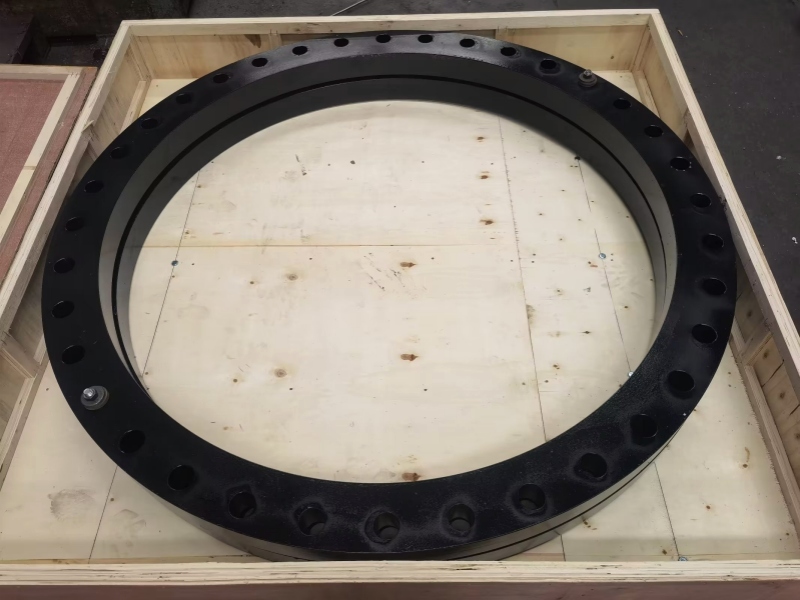
What Are You Looking For?
Pressure vessels are the most widely used equipment in the petrochemical industry and are one of the main production tools in the industry. Due to process requirements and the need for installation and maintenance of equipment components, it is necessary to install flanges on pressure vessels (such as shell and tube heat exchangers, reactors, towers, filters, etc.).
The inspection of pressure vessel flanges includes internal inspection, external inspection, and final inspection.

1. Internal and external inspections
A.The internal and external inspection of pressure vessel forgings must be carried out after stopping operation and cleaning the inside of the vessel.
B.The main content of the inspection includes not only all external inspections, but also the inspection of corrosion and wear on the inner and outer surfaces. All welds, the cap transition zones, and other stress concentration areas need to be inspected for cracks using eyes and magnifying glass. If necessary, use ultrasonic testing (UT) or radiographic testing (RT) to inspect the internal quality of welds.
C.Measure the wall thickness. If the measured wall thickness is less than the minimum wall thickness of the vessel, the strength verification should be carried out again, and propose reduce usage pressure or repair it;
D.Vessels that may cause changes in the metallographic structure of metal materials should undergo metallographic examination if necessary;
E.The main bolts of high-pressure and ultra-high pressure vessels should be inspected for cracks using Magnetic particle Testing (MT) or Penetrant Testing (PT).
F.Through internal and external inspections, analyze the causes of defects identified and propose solutions. After repair, it needs to be inspected again. The internal and external inspection cycle of pressure vessels is once every three years, but the inspection cycle for vessels with strongly corrosive and highly toxic media should be shortened. When serious defects and are found in vessels and with poor welding quality and unclear material resistance to medium corrosion during operation, the inspection cycle should also be shortened.
2. External inspection
External inspection, also known as in operation inspection, mainly includes checking for abnormal phenomena such as cracks, deformation, leakage, and local overheating on the pressure vessels; Whether the safety accessories are complete, sensitive, and available; Whether the fastening bolts are intact and fully tightened; Check for any abnormal phenomena such as foundation sinking, tilting, and damage to the anti-corrosion layer. External inspection is not only the job of inspectors, but also a routine inspection item for operators. Once any safety hazards are discovered (such as cracks, deformation, severe leakage of compressed components), the equipment should be shut down and promptly reported to relevant personnel.
3.Final inspection
In addition to the above inspection items, the final inspection of pressure vessel forgings also requires a pressure test (usually a Hydrostatic test). Perform non-destructive testing spot checks on the main welds or inspect all welds. Perform non-destructive testing spot checks on the main welds or inspect all welds. However, for containers with low pressure, non flammable, non-toxic, and non corrosive media, if no defects are found and certain usage experience is obtained, non-destructive testing may not be conducted. The final inspection cycle for containers is generally at least once every six years. For manufacturing qualified containers containing air and inert gases, The final inspection cycle can be appropriately extended after obtaining usage experience and conducting one or two internal and external inspections to confirm no corrosion.